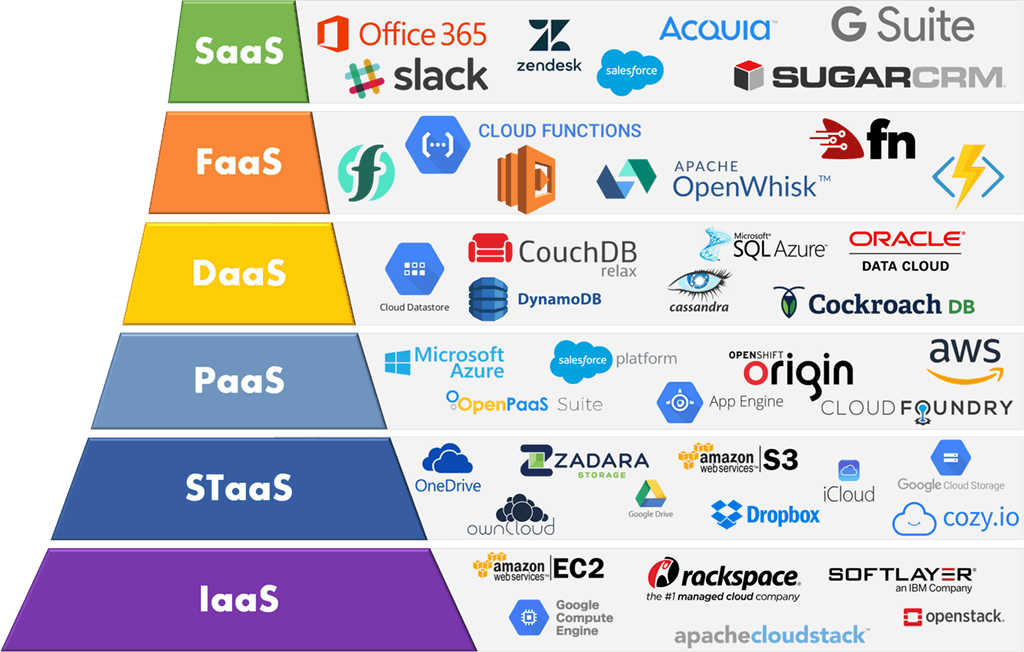Cloud Services: Optimize Your Workflow with Advanced Modern Technology
Cloud Services: Optimize Your Workflow with Advanced Modern Technology
Blog Article
Drive Innovation: Using the Power of Cloud Provider
In the hectic landscape of modern-day business, harnessing the power of cloud services has come to be a vital element for organizations intending to drive development and maintain an one-upmanship. The capacity to range resources dynamically, embrace innovative modern technologies seamlessly, and simplify advancement procedures effectively can considerably influence an organization's capacity to adapt and introduce. As we explore the complex relationship in between cloud solutions and advancement, fascinating understandings on how cloud services reinvent traditional business practices and lead the way for groundbreaking developments will be revealed.
Advantages of Cloud Provider
Cloud solutions offer many benefits to services and people seeking efficient and flexible remedies for their electronic demands. One of the essential advantages of using cloud services is the cost-effectiveness they offer.
Moreover, cloud services boost access and partnership amongst teams. With data kept in the cloud, workers can firmly access documents and applications from anywhere with a net link, advertising remote job capabilities and boosting productivity. Real-time cooperation attributes make it possible for multiple users to work on records at the same time, promoting smooth team effort regardless of physical location.
Another advantage of cloud solutions is the boosted information safety and catastrophe recuperation they use. Cloud carriers apply advanced security procedures to safeguard information from cyber risks, ensuring conformity with industry laws. Furthermore, automatic backups and healing remedies reduce the risk of information loss because of unforeseen occasions, supplying assurance to individuals.
Cloud Movement Strategies
Transitioning to cloud services involves meticulous preparation and tactical implementation to ensure a effective and smooth migration procedure. When moving their operations to the cloud, there are several cloud movement techniques that organizations can take into consideration. One typical method is the 'Rehost' approach, where applications are lifted and moved to the cloud with marginal changes. This technique is fast but may not totally optimize cloud advantages. The 'Replatform' approach involves making some cloud optimizations during migration, such as upgrading the application design to take advantage of cloud-native attributes. Cloud Services. For a much more extensive makeover, the 'Refactor' technique entails rearchitecting applications to be cloud-native, improving scalability and performance. In addition, the 'Repurchase' approach entails replacing existing software application with cloud-based choices, while the 'Retire' approach involves decommissioning repetitive applications. Selecting the right movement strategy relies on variables like cost, timeline, and wanted results, requiring a careful assessment of each choice's obstacles and advantages.
Enhancing Cooperation in the Cloud
Enhancing team collaboration through cloud-based tools can considerably boost efficiency and simplify interaction within companies. By leveraging cloud services, teams can collaborate perfectly despite their physical places, enabling real-time partnership on projects. Cloud-based interaction tools such as Slack, Microsoft Teams, or Google Work area give a centralized platform for staff member to share documents, exchange concepts, and coordinate jobs successfully. These devices use functions like instantaneous messaging, video conferencing, documents sharing, and project management, improving team effort and lowering reliance on standard communication approaches like emails.

Safety And Security Considerations for Cloud Adoption
How can companies ensure the robust safety of their data when taking on cloud solutions? Security factors to consider are extremely important in the adoption of cloud solutions. To safeguard data, organizations should initially perform a thorough danger analysis to identify potential vulnerabilities and dangers. Executing solid file encryption approaches for information both in transportation and at rest is vital. Accessibility control devices must be established to limit unauthorized entrance, and multi-factor authentication can add an added layer of security. Routine safety audits and surveillance of the cloud her latest blog setting help in identifying and mitigating any protection violations promptly.

Cloud-Native Advancement Practices
In the world of cloud computing, embracing cloud-native technology techniques is important for organizations aiming to optimize their digital facilities and boost operational performance. Cloud-native innovation techniques entail developing applications particularly for cloud environments, leveraging the scalability, versatility, and dexterity that cloud solutions use. By developing applications with cloud-native principles in mind, such as microservices design, containerization, and orchestration, companies can improve their advancement processes, boost resource usage, and respond more efficiently to altering market demands.
Additionally, cloud-native advancement techniques advertise continual combination and constant shipment (CI/CD) pipes, allowing automated testing, deployment, and tracking of applications. This repetitive method promotes faster innovation cycles and boosts general software program quality. In addition, using serverless computer and took care of services permits organizations to concentrate on developing core service functionalities while offloading facilities monitoring jobs to shadow service carriers.
Essentially, accepting cloud-native development methods empowers companies to drive advancement, speed up time-to-market, and stay competitive in today's quickly developing electronic landscape.
Conclusion

As we check out the intricate relationship between cloud services and innovation, interesting insights on just how cloud remedies transform useful source conventional business techniques and pave the method for groundbreaking improvements will be exposed. - Cloud Services
There are a number of cloud migration methods that companies can take into consideration when relocating their operations to the cloud. Cloud-native development practices entail establishing applications especially for cloud settings, leveraging the scalability, versatility, and dexterity that cloud solutions provide. Furthermore, the use of serverless computing and handled services enables companies to focus on establishing core service performances while offloading infrastructure monitoring tasks to shadow service providers.
It is vital for companies to take into consideration cloud migration strategies, enhance collaboration in the cloud, and focus on security steps to make sure successful adoption of cloud services and drive innovation within their company.
Report this page